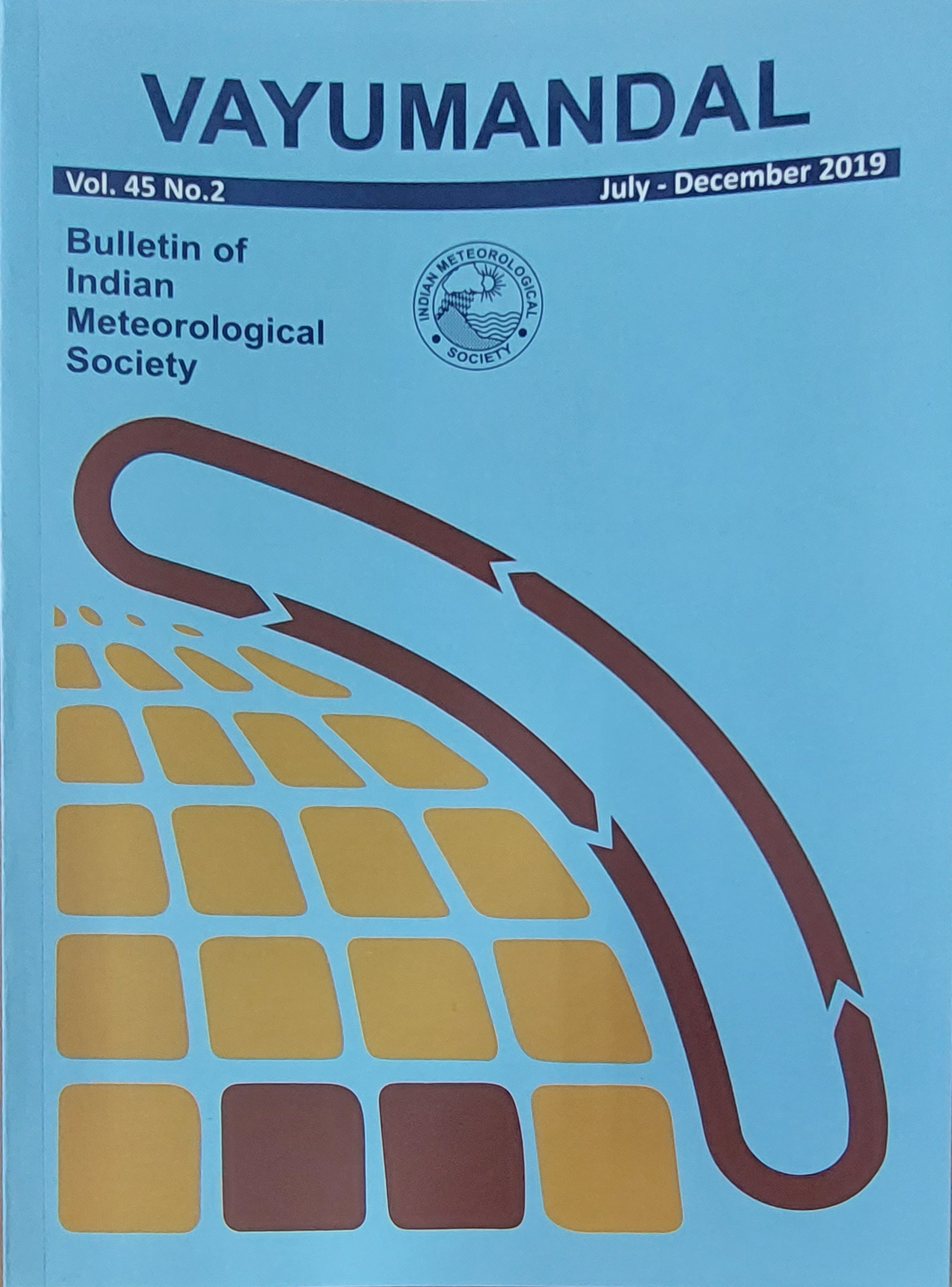A Case Study on Dust Storms/Thunderstorms over Uttar Pradesh on 2nd May 2018
Abstract
Thunderstorms are the manifestation of the convective activity in the atmosphere. It’s destructive off springs are the hailstorms, lightening, high winds, heavy rains and most violent of all are the tornadoes. Dry thunderstorms produce dust storms which are usually considered to be natural hazards. During such events, dust aerosol is loaded into the atmosphere, directly reducing visibility and effectively reflecting solar radiation back to space. Essential conditions for the formation of a severe thunderstorm are (i) Conditional instability (ii)Availability of moist air at lower levels (iii)Insolation and orography for initial lifting of moist air at higher levels (iv)Presence of high lapse rate of temperature, due to dry westerly at upper levels and moist southerly/southwesterly air at lower levels and (v)Presence of trough or cyclonic circulation in lower levels over the region. In addition, strong vertical wind shear is found to be one of the important factors for the occurrence of severe thunderstorm as the release of latent energy in an environment of strong vertical wind shear often leads to the development of severe convective storms. Though each one of the above mentioned conditions is considered favourable for convective development, their relative importance and the weightage to be given to each factor have not yet been clearly established. Thus, any discussion on this will have to be only qualitative and in general terms. Thunderstorms occur in northwest India and west Uttar Pradesh in all the months of pre-monsoon season. The activity is more in western Himalayas than in the plains. In the plains the activity is more in the second half than in the first half of the season. Dust storm occurs only in the plains. Significant dust storm activity begins in April and reaches its maximum in June. These dust storms are locally known as Andhi.
In this study, Dust storms/Thunderstorms phenomena those occurred in Uttar Pradesh on large scale on 2nd May 2018 have been studied. These deadly storms claimed more than 100 lives in the state. We have analyzed different features of thermodynamic indices and parameters, synoptic situations and various products of numerical weather prediction model and tried to find out probable dynamic and thermodynamic aspects of such weather phenomenon. For study of thunderstorms, the synoptic conditions, current weather observations, satellite imageries and Doppler Weather Radar products have been used.
Copyright (c) 2024 Vayumandal

This work is licensed under a Creative Commons Attribution-NonCommercial 4.0 International License.
All articles published by VAYUMANDAL are licensed under the Creative Commons Attribution 4.0 International License. This permits anyone.
Anyone is free:
- To Share - to copy, distribute and transmit the work
- To Remix - to adapt the work.
Under the following conditions:
- Share - copy and redistribute the material in any medium or format
- Adapt - remix, transform, and build upon the material for any purpose, even
commercially.


